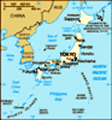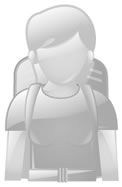Advertisement
My father wasn’t very keen on walking slopes and steps; so my mother suggested joining the bus tour on 19 April. She paid fees for this bus tour for us. This bus tour would start at 10 o’clock. As lunch wasn’t included in this bus tour, we bought snacks at the convenience store before getting on the bus.
Like Hiroshima, Nagasaki is known as the place where an atomic bomb dropped on 9
th August 1945. Our first stop was Nagasaki Atomic Bomb Museum. This museum was built for the anniversary of 50
th year of the disasters of the atomic bomb and was opened in 1996. My mother and I went to the old one in 1989, admittedly, I didn’t remember much of the exhibitions at that time but thought exhibition rooms had been enlarged since the last time we were there. The enlarged exhibition rooms showed us the drastic ruins of Urakami Cathedral and damage caused by the flash of heat like six melted bottles and the bones of the hand in glass – the bones of a human hand are stuck to a clump of glass that melted as a result of the extreme heat, and worn
out clothes. We were quite impressed to see documents and photos of how rescue workers and Dr Nagai who helped out victims who had uncurable and unknown diseases (there wasn’t any information of radioactivity which would cause people to hold cancerous diseases and it might transmit to their descendants) and serious injuries.
We were taken to Peace Park, the symbol of Nagasaki. Many people took photos with the statue of peace. We walked round the park and found many monuments and statues donated from many countries. I saw the fountain of peace dedicated to the sufferers dying in search for water – and translated the wording for Mark: a lot of oily bits floating in the water; though looking dirty, I drank the water as I was very thirsty…
Afterwards, the bus moved to the downtown of Nagasaki. During the move, the bus guide showed us some historic buildings and monuments: Urakami Cathedral – despite its near complete destruction after 9 August 1945, it has been miraculously and beautifully restored; and one-legged torri gate – has been kept as a symbol of an atomic explosion.
Nagasaki has rich history and describes

 Fountain in the Peace Park
Fountain in the Peace Park
It says: 'A lot of dirty oily bits floating in the water; though looking dirty, I drank the water as I was very thirsty...the city of romance. After seeing documents and monuments of an atomic bomb, we were taken to Nagasaki Museum of History and Culture. This bus tour included entry tickets to museums and attractions; the tour guide kindly picked English leaflets of these places for Mark and some foreign tourists in the bus, as well as buying tickets.
Nagasaki Museum of History and Culture housed a number of precious historical documents and arts & crafts, which illustrate the theme of ‘Overseas Exchange’. We saw exhibitions of European trade and Christianity, exchange with Korea and Nagasaki trade with Chinese ships, Dutch ships, exchange with China and exchange with the Netherland in Dejima including Dutch studies and medical science and forerunner of modernization. We were also invited to see the reconstructed Nagasaki Magistrate Office. The ushers helped us and showed us highlights of historical documents in the permanent exhibition rooms and in the reconstructed Magistrate’s Office.
We were then taken to the area near to Meganebashi (Spectacle) Bridge. This double arch stone bridge was constructed in 1634 by the second chief priest of Kofukuji temple and has been designated as an important cultural property for being the
oldest stone bridge in Japan. There were the new couple taking memorial photos with this historic bridge on 19
th April.
Afterwards, the bus moved southwards and showed us Dejima, Shichi-Chinatown and Holland Slope and took us to Confucian Shine. As the name suggested, this shrine was built in a mixed architectural style of Northern and Southern China and showed 72 statues, all of which showed different features and were sculpted in China. Vivid dragon featured sculptures and strikingly pointed columns impressed me.
After returning to the bus, we were taken to the large parking area on the foot of Holland Slope. The guide took us to the entrance of Oura Catholic Church. She bought tickets for Oura Catholic Church and Glover Garden and asked us to come back to the bus at the Car Park by 14.50. It was a sunny and warm afternoon; we decided to explore the Glover Garden. Glover Garden was named after a British merchant, Thomas Glover, who made a great contribution to the modernization of Japan. It was a valley garden and had several Western style buildings including Thomas Glover’s residential house, which was under renovation on 19 April.
The garden had colourful flowers on the pots and on the beds and a lot of climbing shrubs growing in the pergolas and arches. We also enjoyed a stunning view of Nagasaki harbour – there was a very big liner, which looked like being used for the cruise ship.
One of the drawbacks of the bus tour was participants had to go back to the bus by the certain time. After strolling through the lovely Western garden, we found that we wouldn’t have the time to visit Oura Catholic Church and went back to the Car Park.
The bus tour returned to Nagasaki station at 14.55 on time. My parents decided to have a rest in the afternoon. We went to JR office to get our railway vouchers exchanged for the railway pass.
Nagasaki Museum of History and Culture The bus guide told us that the tickets for Nagasaki Museum of History and Culture would be valid for two days. Having heard that the museum would open till 19.30, we decided to go back there to see exhibitions more closely. I found that the
museum is a walking distance from Sakura-machi tram station. Nagasaki has four tram lines; and there were two lines stopping at Nagasaki Eki (JR station) tram station. The platforms of the tram lines were accessible by the footbridge. After getting off at Sakura-machi tram station, we followed the signs to the museum; it was about a 10 minutes’ walk.
Upon the arrival at the museum, we showed the tickets to the receptionists. They and some of the volunteer guides recognized us. The museum was a lot quieter in the late afternoon than the morning; it allowed us to see exhibition rooms more closely – historical documents, original paintings and calligraphies, samples of imported goods (silks, clothes, spices and porcelain glassworks and sugar) which made Nagasaki prosper through the trading with Western countries, Korea, China, and Southeast Asian countries. By the beginning of the Edo period, the Tokugawa Shogunate had limited Japan to trade with Western countries, but the Shogunate ordered to construct a fan-shaped island off Nagasaki harbour, which was named Dejima and allowed to do the exchanges with the Netherlands. The exhibitions included the modelled showrooms which allowed visitors to peek through how the Dutch merchants

 Meganebashi Bridge
Meganebashi Bridge
Meganebashi means spectacle bridge. brought their items under the Shogunate’s operatives and how they lived in the Dejima Island. It was interesting to see the books of anatomy – detailed structure of human body, which was the pioneer of the modern medical science. We looked round the reconstructed Magistrate’s Office as well. This Shogunate government office’s purposes were enforcing to cease Christian people’s activities, ban trading ships other than the Netherlands and China and ban smuggling. There have been a number of items excavated recently and excavated items included the board telling the finders to be given rewards for reporting Christians;
fumie, which showed the image of St May, was used for detecting Christian people. We looked at Taimensho, where Shogunate officers interviewed with the head of the Dutch trading merchant and examine trading goods; gohaku-sho, where jury service took place; and Shoin, which was used as Shogunate officers’ reception room.
I bought a couple of souvenirs at the gift shop, and then we returned to our hotel.
Advertisement
Tot: 0.181s; Tpl: 0.013s; cc: 16; qc: 53; dbt: 0.1077s; 1; m:domysql w:travelblog (10.17.0.13); sld: 1;
; mem: 1.2mb













